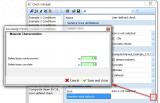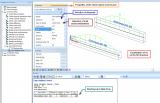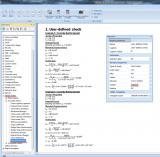sen.07 - Open Design
- Kód modulu sen.07
-
Softvér
- SCIA Engineer
-
Zahrnuté v edícii
- Professional,
- Expert,
- Ultimate
- Kategória Iné
- Licencia Trvalé
Highlights
SCIA Engineer offers users the possibility to implement their own engineering calculations and use these as plug-in checks during their everyday work with CAE projects -- e.g. in a graphical review of overall capacity in a 3D structure, in an AutoDesign optimisation, and in reporting. Design checks related to:
are a few examples of what may, from now on, be added by end-user engineers via the easy-to-use open platform.
SCIA Engineer automates a vast variety of design checks according to national and international standards.1D beams, 2D plates, 0D joints and supports may be verified according to rules given in codes, taking into account material characteristics, internal forces and other load effects that are either input in the CAE model or calculated during FEM-based analysis. Next to it, SCIA Engineer allows the users to link their own tailor-made checks and execute them using analysis data and FEM results from the 3D model. These user-defined checks are handled in the same way as the in-house checks.

Users who perform structural analysis and standard checks in SCIA Engineer now have the possibility to add a missing special checks.
New checks are defined using an engineering platform called Design Forms. The versatile interface between SCIA Engineer and Design Forms guides the user through a simple, semi-automated linking process, while the results of the checks are displayed on the 3D structure and a report is send to the project documentation in the Engineering Report.


User-defined checks based on the open platform of Design Forms are a step beyond linking spreadsheets made in MS Excel. Without cell mapping and with the intelligent handling of variables, the new solution is both simple and fool-proof.


Conditions ensure the simplicity of the linking process:
These conditions may be set both in Design Forms and in SCIA Engineer.

The API in SCIA Engineer displays the input dialogue as defined and visible in Design Forms.
Required modules: